BMW 2008 Annual Report Download - page 208
Download and view the complete annual report
Please find page 208 of the 2008 BMW annual report below. You can navigate through the pages in the report by either clicking on the pages listed below, or by using the keyword search tool below to find specific information within the annual report.-
 1
1 -
 2
2 -
 3
3 -
 4
4 -
 5
5 -
 6
6 -
 7
7 -
 8
8 -
 9
9 -
 10
10 -
 11
11 -
 12
12 -
 13
13 -
 14
14 -
 15
15 -
 16
16 -
 17
17 -
 18
18 -
 19
19 -
 20
20 -
 21
21 -
 22
22 -
 23
23 -
 24
24 -
 25
25 -
 26
26 -
 27
27 -
 28
28 -
 29
29 -
 30
30 -
 31
31 -
 32
32 -
 33
33 -
 34
34 -
 35
35 -
 36
36 -
 37
37 -
 38
38 -
 39
39 -
 40
40 -
 41
41 -
 42
42 -
 43
43 -
 44
44 -
 45
45 -
 46
46 -
 47
47 -
 48
48 -
 49
49 -
 50
50 -
 51
51 -
 52
52 -
 53
53 -
 54
54 -
 55
55 -
 56
56 -
 57
57 -
 58
58 -
 59
59 -
 60
60 -
 61
61 -
 62
62 -
 63
63 -
 64
64 -
 65
65 -
 66
66 -
 67
67 -
 68
68 -
 69
69 -
 70
70 -
 71
71 -
 72
72 -
 73
73 -
 74
74 -
 75
75 -
 76
76 -
 77
77 -
 78
78 -
 79
79 -
 80
80 -
 81
81 -
 82
82 -
 83
83 -
 84
84 -
 85
85 -
 86
86 -
 87
87 -
 88
88 -
 89
89 -
 90
90 -
 91
91 -
 92
92 -
 93
93 -
 94
94 -
 95
95 -
 96
96 -
 97
97 -
 98
98 -
 99
99 -
 100
100 -
 101
101 -
 102
102 -
 103
103 -
 104
104 -
 105
105 -
 106
106 -
 107
107 -
 108
108 -
 109
109 -
 110
110 -
 111
111 -
 112
112 -
 113
113 -
 114
114 -
 115
115 -
 116
116 -
 117
117 -
 118
118 -
 119
119 -
 120
120 -
 121
121 -
 122
122 -
 123
123 -
 124
124 -
 125
125 -
 126
126 -
 127
127 -
 128
128 -
 129
129 -
 130
130 -
 131
131 -
 132
132 -
 133
133 -
 134
134 -
 135
135 -
 136
136 -
 137
137 -
 138
138 -
 139
139 -
 140
140 -
 141
141 -
 142
142 -
 143
143 -
 144
144 -
 145
145 -
 146
146 -
 147
147 -
 148
148 -
 149
149 -
 150
150 -
 151
151 -
 152
152 -
 153
153 -
 154
154 -
 155
155 -
 156
156 -
 157
157 -
 158
158 -
 159
159 -
 160
160 -
 161
161 -
 162
162 -
 163
163 -
 164
164 -
 165
165 -
 166
166 -
 167
167 -
 168
168 -
 169
169 -
 170
170 -
 171
171 -
 172
172 -
 173
173 -
 174
174 -
 175
175 -
 176
176 -
 177
177 -
 178
178 -
 179
179 -
 180
180 -
 181
181 -
 182
182 -
 183
183 -
 184
184 -
 185
185 -
 186
186 -
 187
187 -
 188
188 -
 189
189 -
 190
190 -
 191
191 -
 192
192 -
 193
193 -
 194
194 -
 195
195 -
 196
196 -
 197
197 -
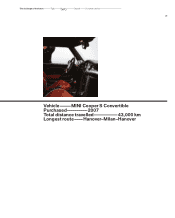 198
198 -
 199
199 -
 200
200 -
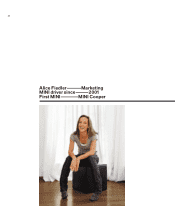 201
201 -
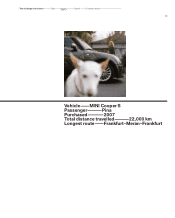 202
202 -
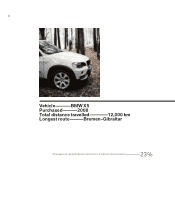 203
203 -
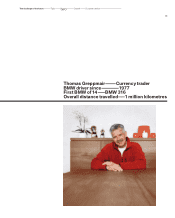 204
204 -
 205
205 -
 206
206 -
 207
207 -
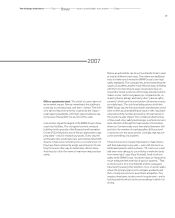 208
208 -
 209
209 -
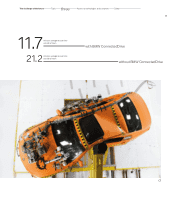 210
210 -
 211
211 -
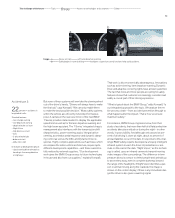 212
212 -
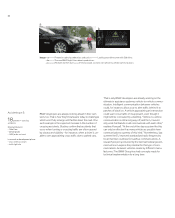 213
213 -
 214
214 -
 215
215 -
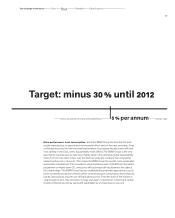 216
216 -
 217
217 -
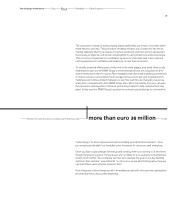 218
218 -
 219
219 -
 220
220 -
 221
221 -
 222
222 -
 223
223 -
 224
224 -
 225
225 -
 226
226 -
 227
227 -
 228
228 -
 229
229 -
 230
230 -
 231
231 -
 232
232 -
 233
233 -
 234
234 -
 235
235 -
 236
236 -
 237
237 -
 238
238 -
 239
239 -
 240
240 -
 241
241 -
 242
242 -
 243
243 -
 244
244 -
 245
245 -
 246
246 -
 247
247 -
 248
248 -
 249
249
 |
 |

49
Before an automobile can be sold worldwide it has to pass
at least different crash tests. Then there are additional
tests to make sure it meets the BMW Group’s own high
safety standards. The company has been researching the
causes of accidents and the most effective ways of dealing
with them for more than years. Developers have en-
dowed the Group’s vehicles with energy-absorbing defor-
mation zones, reinforced passenger compartments, re-
straint systems, airbags and many other “passive safety
systems” which save lives and protect drivers from injury
on a daily basis. The side head airbag alone, which the
BMW Group was the first automobile manufacturer world-
wide to offer as a standard feature back in , has drasti-
cally reduced the number and severity of head injuries in
the event of a side impact. The combined effectiveness
of
these and other safety technologies is reflected in acci-
dent statistics: Although the total number of kilometres
driven on German roads more than tripled between
and , the number of road casualties fell by around
percent over the same period. Ironically, that has be-
come
something of a problem.
It has now become virtually impossible to make drivers
and their passengers any safer – even with the most so-
phisticated passive safety systems. “Of course we could
add even more airbags to our vehicles or make the body
even more rigid,” says Klaus Kompaß, head of vehicle
safety at the BMW Group, “but these days we have pretty
much exhausted the potential of passive systems.” That
is why for some time now Kompaß and his colleagues
have been focussing their attention more on active safety,
where the primary goal is not to mitigate accidents and
their consequences but to avoid them altogether. This
requires developers to take a much broader view – and to
look beyond the vehicle to the surroundings in which it is
driving.
Off to a spectacular start. The shriek of a siren warns of
an imminent impact. Almost immediately the building is
rocked by an ominous thud, and then – silence. The vehi-
cle’s tail-end has been severely crushed by the impact –
under glaring spotlights, with high-speed cameras cap-
turing
every thousandth of a second of the crash.
Just another day at the largest of the BMW Group’s three
crash test facilities. The elongated cement-encased
building
on the grounds of the Research and Innovation
Centre (FIZ) in Munich is sort of like an ultramodern
scrap-
ping plant – only for research purposes. Every day the
technicians here send brand new automobiles fitted with
dozens of test sensors hurtling into a concrete block. Or
they have them rammed by a high-speed barrier. Or else
they find some other way to deliberately deform them.
And they do it all in the name of maximum and precision
safety.
The challenge of the future Topic three Access to technologies and customers Safety
2007
